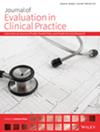Association of Clinical Indicators of Acute Deterioration and Morbidity and Mortality in the Residential Aged Care Population: A Retrospective Cohort Study of Routinely Collected Health Data
Abstract
Introduction
The timely identification of acute deterioration in people living in residential aged care is critical to reducing rates of resident morbidity and mortality. However, residents often present with atypical or nonspecific presentations that make this difficult. This study aimed to quantify the strength of the relationship between the indicators acute deterioration reported in the literature and morbidity and mortality.
Method
A retrospective cohort study using routinely collected health data. A single dependant acute deterioration variable (emergency department presentation or hospital admission or death within 7 days of the last completed international resident assessment instrument long-term care facility (interRAI-LTCF) assessment) was correlated with indicators of acute deterioration reported in the literature and available in interRAI-LTCF. Univariate and multivariate logistic regression analysis evaluated this association.
Results
Nine variables were independently associated with acute deterioration. These were being ‘largely asleep or unresponsive’ odds ratio (OR): 7.95, 95% CI: 4.72–13.39, p < 0.001, ‘easily distracted’ (OR: 1.78, 95% CI: 1.28–2.49, p < 0.001), eating ‘one or fewer meals a day’ (OR: 2.13, 95% CI: 1.67–2.73, p < 0.001), reduced activities of daily living (OR: 2.06, 95% CI: 1.11–3.82, p = 0.02) inability to complete toilet transfer (OR: 1.95, 95% CI: 1.24–3.03, p = 0.004), ‘dyspnoea; at rest’ (OR: 1.81, 95% CI: 1.32–2.49, p < 0.001), ‘two or more falls in 30 days’ (OR: 1.53, 95% CI: 1.15–2.03, p = 0.003), peripheral oedema (OR: 1.37, 95 CI: 1.07–1.77, p = 0.014) and daily pain (OR: 1.37, 95% CI: 1.05–1.77, p = 0.019).
Conclusion
Presenting with one of nine variables made residents between 1.4 and 8 times more likely to be experiencing acute deterioration than others living in the facility. The monitoring the resident for these variables by healthcare assistants could support the timely identification of acute deterioration.
Trial Registration
Not applicable.


 求助内容:
求助内容: 应助结果提醒方式:
应助结果提醒方式:


